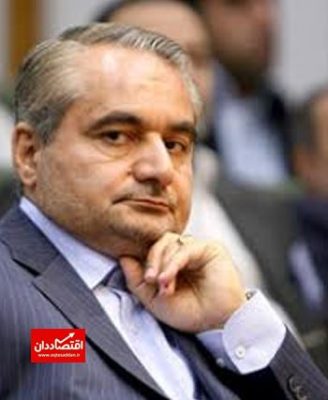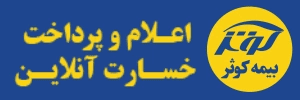اقتصاددان : سید حسین موسویان، متخصص سیاستهای امنیتی خاورمیانه و هستهای در دانشگاه پرینستون و سخنگوی پیشین تیم مذاکرهکننده هستهای ایران : پس از تبادل نامهای میان رئیسجمهور آمریکا، دونالد ترامپ، و رهبر ایران، آیتالله علی خامنهای، و از زمان آغاز مذاکرات اولیه در 12 آوریل، چهار دور مذاکره دوجانبه مستقیم و غیرمستقیم درباره برنامه هستهای ایران پیشرفت داشتهاند. این مذاکرات به رهبری وزیر امور خارجه ایران، عباس عراقچی، و مذاکرهکننده ارشد دولت ترامپ، استیو ویتکوف، در جریان است.
در این مرحله از مذاکرات، طرفین باید به تفاهمی مشترک در زمینه اقدامات راستیآزمایی و شفافیت دست یافته باشند. همکاری کامل ایران با آژانس بینالمللی انرژی اتمی (IAEA) از طریق اجرای پروتکل الحاقی، که مهمترین سازوکار بازرسی و راستیآزمایی است، میتواند ابهامات فنی موجود درباره ماهیت صلحآمیز برنامه هستهای ایران را برطرف کند.
در سال 2018، رئیسجمهور ترامپ از برنامه جامع اقدام مشترک (برجام) که به عنوان توافق هستهای ایران شناخته میشود، خارج شد و آن را «بدترین توافق ممکن» خواند. در روز سهشنبه، در جریان نخستین سفر خود به خاورمیانه در دوره دوم ریاستجمهوریاش، ترامپ اعلام کرد که مایل به دستیابی دوباره به توافقی با ایران است. ترامپ همواره به دنبال توافقهای بزرگ و خارج از چارچوبهای معمول بوده است. اکنون که او در منطقه سفر میکند، باید فراتر از موضوع هستهای ایران بیاندیشد و برای تحقق خاورمیانهای عاری از سلاح هستهای تلاش کند.
معضل غنیسازی اورانیوم ایران
از سال 2003 تا 2013، مذاکرات هستهای میان قدرتهای جهانی و ایران به دلیل مخالفت ایالات متحده با حق ایران برای غنیسازی صلحآمیز اورانیوم، به شکست انجامید. اما طبق معاهده عدم اشاعه سلاحهای هستهای (NPT)، تمامی کشورهای عضو حق برخورداری از غنیسازی صلحآمیز را دارند. ژاپن، آلمان، برزیل و آرژانتین اجازه توسعه برنامههای غنیسازی را داشتهاند و ایران نیز باید از این حق برخوردار باشد.
مذاکرات هستهای از 2013 تا 2015 به دلیل عدم مخالفت آمریکا با اصل غنیسازی صلحآمیز توسط ایران، منجر به توافق برجام شد. با اجرای برجام، ایران با آژانس همکاری کرد و تا دسامبر 2015، تمام ابهامات فنی برطرف شدند. اما پس از خروج دولت اول ترامپ از برجام و اعمال تحریمهای فشار حداکثری علیه ایران، تهران تعهدات خود را کاهش داد، برنامه غنیسازی را گسترش داد و در نهایت به آستانه تبدیل شدن به یک کشور هستهای رسید.
اکنون، دولت دوم ترامپ بار دیگر حق قانونی و مشروع ایران برای غنیسازی صلحآمیز را زیر سؤال برده است. در روزهای اخیر، ویتکوف گفته که ایران باید از غنیسازی دست بکشد و عراقچی در پاسخ اعلام کرده که این مسئله خط قرمز ایران است.
با تکیه بر دههها تجربه و آشنایی با برنامه هستهای ایران، برای من روشن است که تنها در صورتی امکان دستیابی به توافق هستهای میان ترامپ و ایران وجود دارد که خط قرمز ترامپ صرفاً بر عدم دستیابی ایران به سلاح هستهای متمرکز باشد، نه انکار حقوق قانونی ایران در توسعه فناوری صلحآمیز هستهای از جمله غنیسازی. ایران تحت هیچ شرایطی تبعیض، تحقیر و محروم شدن از حقوق بینالمللی خود را نخواهد پذیرفت.
خطر اشاعه منطقهای
دستیابی به توافق هستهای میان آمریکا و ایران، بدون شک یک ضرورت فوری و حیاتی برای رفع یکی از خطرات اشاعه هستهای در خاورمیانه است. اما مسئله عدم اشاعه در منطقه بسیار فراتر از موضوع غنیسازی ایران است.
حتی در سناریوی بعیدی که ایران از غنیسازی دست بکشد، مشکل به دلایل زیر همچنان باقی خواهد ماند:
- توانایی و دانش فنی ایران در حوزه غنیسازی غیرقابل بازگشت است؛ حتی حمله نظامی نیز قادر به حذف آن نیست.
- طبق ماده 10 معاهده NPT، تمامی اعضا حق خروج از این معاهده را دارند؛ گزینهای که در شرایط خصومت مداوم ایران و آمریکا همچنان برای تهران قابل اتکا خواهد بود.
- اسرائیل تنها کشوری در منطقه است که دهها سلاح هستهای در اختیار دارد. این واقعیت برای دههها مانع از تصویب ابتکارات و قطعنامههای سازمان ملل برای ایجاد خاورمیانهای عاری از سلاحهای کشتار جمعی شده است. اسرائیل همچنان از حمایت قوی آمریکا و غرب برخوردار است، اما موقعیت اسرائیل بهعنوان “ژاندارم هستهای” خاورمیانه پایدار نخواهد بود.
- عربستان سعودی و ایالات متحده در حال مذاکره بر سر توافق هستهای هستند که در آن آمریکا با غنیسازی عربستان موافقت خواهد کرد.
- پذیرش غنیسازی توسط عربستان، مسیر را برای سایر قدرتهای منطقهای برای پیگیری غنیسازی باز خواهد کرد.
لذا توافقی که صرفاً بر برنامه هستهای ایران تمرکز دارد، نمیتواند به مسائل گستردهتر و به همان اندازه مهم اشاعه هستهای در منطقه بپردازد.
دکترین هستهای منطقهای جدید، ضرورتی اجتنابناپذیر
یک نقشه راه دو مرحلهای میتواند به تحقق دستاوردی تاریخی و عظیم یعنی خلع سلاح هستهای خاورمیانه منجر شود.
تشکیل کنسرسیوم هستهای خلیج فارس
به عنوان گام نخست، دولت ترامپ باید با هشت کشور حاشیه خلیج فارس همکاری کند تا از طریق ایجاد یک کنسرسیوم هستهای خلیج فارس، دکترین هستهای جدیدی را تعریف کنند. این دکترین باید شامل تلاشی هماهنگ برای ایجاد چارچوبی جامع و فراگیر در زمینه عدم اشاعه هستهای باشد—گامی بزرگ بهسوی ایجاد سیستم همکاری، امنیت و ثبات منطقهای در خلیج فارس.
این دکترین میتواند حول چهار اصل کلیدی شکل گیرد:
- کنسرسیوم منطقهای برای غنیسازی: همانند شرکت اروپایی یورِنکو، یک کنسرسیوم برای غنیسازی میتواند در خلیج فارس ایجاد شود تا خطر اشاعه را کاهش دهد. این کنسرسیوم به کشورهای منطقه اجازه میدهد در غنیسازی اورانیوم تحت نظارت چندجانبه شدید مشارکت داشته باشند. این مدل تضمین میکند که همه فعالیتهای غنیسازی صرفاً صلحآمیز، شفاف و تحت نظارت آژانس بینالمللی و ذینفعان منطقهای انجام میشود.
- چارچوب ایمنی هستهای منطقهای: گسترش فناوری هستهای صلحآمیز باید با پروتکلهای ایمنی قوی همراه باشد تا از حوادث، تروریسم احتمالی و کاربرد نظامی جلوگیری شود. این چارچوب شامل برنامههای آموزشی مشترک، استانداردهای ایمنی، پروتکلهای ساخت، بهرهبرداری و خروج از خدمت تأسیسات هستهای و سازوکارهای واکنش اضطراری خواهد بود.
- برنامه راستیآزمایی منطقهای: یک نهاد منطقهای راستیآزمایی باید ایجاد شود که در کنار آژانس بینالمللی فعالیت کند تا تمامی فعالیتهای هستهای با هنجارهای عدم اشاعه منطبق باشند. این برنامه شامل بازرسیهای منظم، گزارشدهی شفاف و اقدامات اعتمادساز خواهد بود و باید توانایی راستیآزمایی فعالیتهای مخفی احتمالی را نیز داشته باشد.
- دکترین هستهای منطقهای: در نهایت، یک دکترین جدید باید توسعه همکاریهای صلحآمیز هستهای میان کشورهای منطقه را ترویج دهد. این همکاری میتواند شامل پروژههای تحقیقاتی مشترک، تأسیسات هستهای مشترک و سازوکارهایی برای افزایش شفافیت، کاهش تنش و ترویج رشد اقتصادی و عدم اشاعه باشد.
گام دوم: منطقه عاری از سلاح هستهای
مرحله دوم نقشه راه باید بر ایجاد منطقهای عاری از سلاحهای هستهای درکل خاورمیانه متمرکز باشد. نخستین قطعنامه عمده سازمان ملل در این زمینه که توسط ایران و مصر پیشنهاد شد، در سال 1974 تصویب شد. اما با توجه به اینکه اسرائیل سلاحهای هستهای در اختیار دارد، اجماع بر سراجرای این قطعنامه حاصل نشده و احتمالاً در آینده نزدیک نیز نخواهد شد.
برای پاسخ به نگرانیهای امنیتی منطقهای و الزامات بینالمللی عدم اشاعه، یک دکترین هستهای جدید برای خاورمیانه اجتنابناپذیر است—و باید در دستور کار تمامی مذاکرات هستهای منطقه قرار گیرد.
یک چارچوب جامع عدم اشاعه در خاورمیانه نباید تنها بر فعالیتهای هستهای ایران متمرکز باشد، بلکه باید معماری امنیتی کل منطقه را دربرگیرد. بدون رویکردی چندجانبه که همه قدرتهای منطقهای—چه هستهای و چه غیرهستهای—را دربر گیرد، تلاشهای عدم اشاعه با دشواریهای زیادی روبرو خواهد بود. یک دکترین هستهای جدید میتواند مسیر صلح و ثبات را برای خاورمیانه و فراتر از آن هموار کند.
Beyond Iran: a new nuclear doctrine for the Persian Gulf
By Seyed Hossein Mousavian | May 13, 2025
After a letter was exchanged between US President Donald Trump and Iranian Leader Ayatollah Ali Khamenei, and since the first talks of April 12, four rounds of indirect and direct bilateral negotiations about Iran’s nuclear program have made progress. Iran Foreign Minister Abbas Araghchi and President Trump’s chief negotiator Steve Witkoff are leading the talks.
At this stage of the talks, both sides should have reached a mutual understanding on verification and transparency measures. Iran’s full cooperation with the International Atomic Energy Agency (IAEA) through implementation of the Additional Protocol, the most crucial inspection and verification mechanism, would resolve existing technical ambiguities over the peaceful nature of Iran’s nuclear program.
In 2018, President Trump pulled out of the Joint Comprehensive Plan of Action, also known as the Iran nuclear deal, after calling it the “worst deal ever.” On Tuesday, during his first trip in the Middle East of his second presidency, Trump said he wants to make a deal with Iran again. President Trump cherishes big, out-of-the-box deals. As he tours the region, Trump should think beyond Iran’s nuclear issue and work to achieve the denuclearization of the entire Middle East.
Iran’s uranium enrichment dilemma. From 2003 to 2013, nuclear negotiations between the world powers and Iran failed because the United States denied Iran’s right to peaceful uranium enrichment activities. However, according to the Treaty on the Non-Proliferation of Nuclear Weapons (NPT), all member countries have the right to peaceful enrichment. Japan, Germany, Brazil, and Argentina have been allowed to develop enrichment programs—and so should Iran be.
The nuclear negotiations from 2013 to 2015 led to the Iran nuclear deal because, then, the United States did not oppose the principle of Iran enriching uranium for peaceful purposes. With the implementation of the JCPOA, Iran cooperated with the IAEA, and by December 2015, all of the agency’s technical ambiguities were resolved. After the first Trump administration withdrew from the JCPOA and imposed maximum pressure sanctions on Iran, Tehran responded by reducing its commitments under the deal, expanding its enrichment program and ultimately becoming a nuclear-threshold state.
Now, the second Trump administration is once again questioning Iran’s legal and legitimate right to enrichment of uranium for civilian purposes. In the last few days, Witkoff said that Iran should abandon enrichment, and Araghchi responded that this is Iran’s red line.
From several decades of experience with and knowledge about Iran’s nuclear program, it is clear to me that President Trump might only be capable of reaching a nuclear agreement with Iran if his red line were limited to Iran never acquiring a nuclear bomb, rather than denying Iran’s legitimate and legal rights to develop peaceful nuclear technology, including enrichment. Under no circumstances will Iran accept discrimination, humiliation, and deprivation of its international rights.
Regional proliferation risk. Reaching a nuclear agreement between the United States and Iran is certainly an urgent and vital necessity to eliminate one of the nuclear proliferation risks in the Middle East. However, the issue of non-proliferation in the region goes far beyond Iran’s uranium enrichment.
Even in an unlikely scenario of an agreement between Iran and the United States, in which Iran would give up enrichment, the problem would persist for several reasons:
- Iran’s enrichment capability and know-how are immutable. Even a military attack would not eliminate them.
- According to NPT’s Article 10, all members have the right to withdraw from the treaty. This alternative will remain available to Iran, especially as US-Iran hostilities cannot be resolved through a single-issue nuclear agreement.
- Israel is the only country in the Middle East that possesses dozens of nuclear weapons. For decades, this reality has blocked UN initiatives and resolutions aimed at establishing a Middle East free of nuclear weapons and other weapons of mass destruction. Yet, Israel continues to receive the strongest US and Western support. However, the status of Israel as the “nuclear gendarme” of the Middle East will not endure.
- Saudi Arabia and the United States are negotiating a nuclear deal under which the United States would accept Saudi enrichment.
- Acceptance of enrichment by Saudi Arabia would open the gate for more regional powers in the Middle East to pursue enrichment.
A deal that focuses solely on Iran’s nuclear program would fail to address the broader—and equally pressing—issues of nuclear proliferation in the region.
Therefore, a new regional nuclear doctrine is inevitable. A two-step roadmap could lead to the historic and monumental achievement of denuclearizing the Middle East.
Establishment of a Persian Gulf nuclear consortium. As a first step, the Trump administration should work with regional stakeholders to define a new nuclear doctrine for Persian Gulf through establishment of a Persian Gulf Consortium. Such a doctrine should consist of a concerted effort to create a comprehensive and inclusive nuclear nonproliferation framework—a major stepping-stone toward greater regional cooperation, security, and stability in the Persian Gulf. A new doctrine could be articulated around four core principles.
A regional enrichment consortium. A consortium for enrichment, like Europe’s enrichment company Eurenco, could be established to mitigate proliferation risk in the Persian Gulf. This consortium would allow countries in the Persian Gulf and the wider Middle East to participate in uranium enrichment under strict, multilateral oversight, ensuring that all enrichment activities are for peaceful purposes only. The regional enrichment consortium would ensure that the process of enrichment is conducted peacefully, transparently, and under the supervision of both regional stakeholders and the IAEA. This model could help alleviate regional and international concerns about the potential for nuclear weapons development while enabling states to pursue the peaceful use of nuclear energy.
A regional nuclear safety framework. The proliferation of nuclear technology for peaceful purposes must be accompanied by strong safety protocols to prevent accidents, safeguard against potential terrorism, and ensure that the technology is not diverted for military purposes. A regional nuclear safety framework would include joint training programs, safety standards, and protocols for the construction, operation, and decommissioning of nuclear facilities. It would also establish regional mechanisms for emergency response to nuclear accidents or incidents, ensuring that countries in the region are prepared to manage any radiological event and ensure that nuclear energy is used responsibly and securely.
A regional verification program. A regional verification body should be established that works alongside the IAEA to ensure that all nuclear activities comply with nonproliferation norms. The program would include regular inspections, transparent reporting, and confidence-building measures to reassure all parties that no state is pursuing nuclear weapons under the guise of civilian programs. As a major confidence-building measure, such a mechanism should also include verification of potential clandestine nuclear activities.
A regional nuclear doctrine. Last, a new regional doctrine should promote cooperation for peaceful purposes among states developing nuclear activities in the Middle East. Regional cooperation on nuclear energy matters could take the form of joint research projects (such as those funded by the European Atomic Energy Community, Euratom) and shared nuclear facilities that foster transparency, reduce regional tensions, and promote both economic growth and nonproliferation. Such an effort would encourage dialogue and cooperation among states that have traditionally been rivals and would improve regional stability, ultimately facilitating denuclearization of the region.
Toward a nuclear-weapon-free zone. The second step of the roadmap would focus on establishing a nuclear-weapon-free zone in the Middle East. The first major UN resolution proposed by Iran and Egypt, titled “Establishment of a nuclear weapons-free zone in the region of the Middle East,” was adopted in 1974. But as Israel maintains a nuclear arsenal, the resolution has not gained consensus, and it will likely not be possible to reach a consensus on the creation of a nuclear-weapon-free zone in the region. To address both regional security concerns and the international nonproliferation obligations, therefore, a new nuclear doctrine for the Middle East is inevitable—and must be on the horizon of all nuclear talks in the region.
A comprehensive framework of nuclear nonproliferation in the Middle East must address not just Iran’s nuclear activities but the security architecture of the entire region. Without a multilateral approach that includes all regional powers—both nuclear and non-nuclear—nonproliferation efforts will remain fraught with difficulty. A new nuclear doctrine could offer a pathway to peace and stability in the Middle East and beyond.
https://thebulletin.org/2025/05/beyond-iran-a-new-nuclear-doctrine-for-the-persian-gulf/
مخاطب گرامی، ارسال نظر پیشنهاد و انتقاد نسبت به خبر فوق در بخش ثبت دیدگاه، موجب امتنان است.
ع








